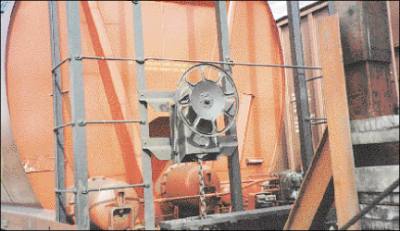A longer discussion of the provisions of the Safety Appliance Act (SAA) and how attorneys who represent railroad workers who suffer injuries or die on the job appears elsewhere on this website. Click here to go to “Applying the Safety Appliance Act Can Help Injured Railroad Workers Succeed With Claims for Compensation.”
The SAA became law across the United States the late 1800s, making it one of the first federal efforts to prevent disabling and deadly workplace accidents. The text of the statute has barely been updated over the past 13 decades, which speaks to how fundamental and effective the basic requirements to equip rail cars with safety devices are.
LEARN MORE
- What Every Railroad Worker Must Know About FELA, On-the-Job Injuries and Occupational Illnesses
- Railroads Must Protect Employees From Injuries by Inspecting, Properly Equipping Locomotives and Rail Cars
- What Not to Do When Injured in a Railroad Accident
Specifically, the SAA gives freight and passenger railroads that do business across state lines legally enforceable duties to install, inspect, repair and repair all of the following components of rail cars:
- Secure ladders and handholds with no missing, loose or damaged rungs;
- Fully operational hand brakes;
- Fully operational air brake systems;
- Properly constructed walkways with nonslip coverings or treatments; and
- Undamaged and nondefective wheels, trucks and gears.
“Doing business across state lines” is interpreted very broadly to include accepting credit card payments, contracting with out-of-state vendors, and having owners headquartered in another state. Consequently, the SAA applies even when trains do not actually cross state borders.
Similar federal legislation, the Locomotive Inspection Act, or LIA, joins the SAA in placing duties on railroads to ensure the safety of engines and crew compartments. Extensive regulations spell out what rail corporations and, to use the language of the laws, “their agents” must do to remain in compliance. Agents of railroads are managers, supervisors and company executives.
Violating an SAA or LIA regulation creates liability for compensating workers who suffer an injury or die as result of the violation. A third law, the Federal Employers Liability Act (FELA), makes this clear.
The overwhelming majority of railroad engineers, conductors, brakemen, signalmen, trackmen, mechanics, clerks and other employees are not covered by state-run workers’ compensation programs. Receiving compensation for medical expenses and a disability or wrongful death following an accident while working on or around a train almost always requires filing a FELA claim.
The surest way to succeed with a FELA claim is to, first, document an SAA or LIA violation and, then, substantiate a connection between the violation and the accident in which the FELA claimant was injured or killed. This case involving a fall from a rail car ladder with a rusted rung that broke free when our client grabbed it illustrates the application of the SAA to a FELA claim.
EJL